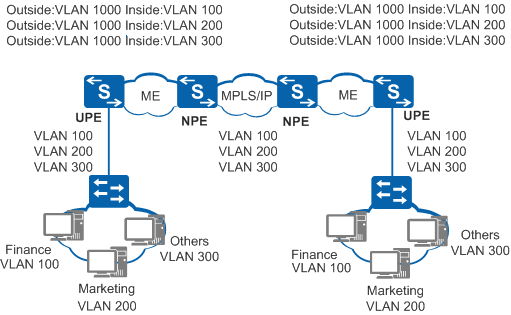Enterprise Network Connection Through Private Lines
As shown in Figure 1, two sites of an enterprise are located in different areas. Each site has three networks: Finance, Marketing, and Others. To ensure network security, the enterprise requires that users belonging to each network be unable to communicate with each other only within the network but not be able to communicate with users on other networks.
The carrier uses VPLS technology on the MPLS/IP core network and basic QinQ technology on the metro Ethernet network. Each site is assigned VLANs 100, 200, and 300, which represent the Finance, Marketing, and Others departments respectively. The UPEs at two ends tag received packets with outer VLAN 1000 (different outer VLAN tags are allowed at two ends), and the same VSI is configured on the NPEs. This configuration ensures that only users who belong to the same VLAN in different sites can communicate with each other.
